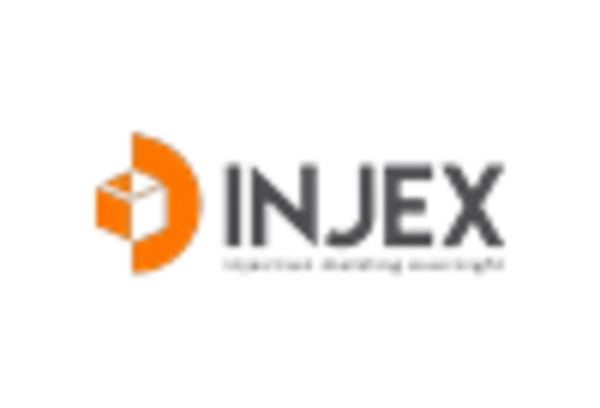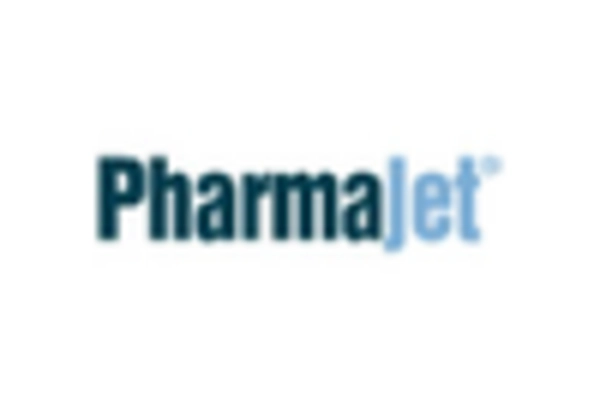Regulatory Support for Needle-Free Injection Market
Regulatory support is a pivotal driver for the Needle-Free Injection Market, as favorable policies and guidelines facilitate the development and approval of innovative devices. Regulatory bodies are increasingly recognizing the benefits of needle-free technologies, which can enhance patient safety and reduce healthcare costs. For instance, streamlined approval processes for needle-free injectors are being implemented, encouraging manufacturers to invest in research and development. This regulatory environment not only fosters innovation but also instills confidence among healthcare providers and patients regarding the safety and efficacy of these devices. As regulations continue to evolve, the Needle-Free Injection Market is likely to benefit from increased investment and a broader range of product offerings, ultimately enhancing market growth.
Technological Advancements in Needle-Free Injection Market
The Needle-Free Injection Market is experiencing a surge in technological advancements that enhance the efficacy and safety of drug delivery systems. Innovations such as micro-jet injectors and spring-loaded devices are gaining traction, allowing for precise and painless administration of vaccines and medications. According to recent data, the market for needle-free injectors is projected to grow at a compound annual growth rate of approximately 20% over the next five years. This growth is driven by the increasing demand for self-administration devices, particularly in chronic disease management. Furthermore, advancements in materials and design are improving the user experience, making these devices more appealing to both healthcare providers and patients. As technology continues to evolve, the Needle-Free Injection Market is likely to witness further enhancements that could redefine patient care.
Increased Patient Acceptance in Needle-Free Injection Market
Patient acceptance plays a crucial role in the expansion of the Needle-Free Injection Market. As awareness of needle-free technologies grows, patients are increasingly favoring these methods due to their perceived benefits, such as reduced pain and anxiety associated with traditional injections. Surveys indicate that a significant percentage of patients express a preference for needle-free options, particularly in pediatric and geriatric populations. This shift in patient attitude is likely to drive demand for needle-free injectors, as healthcare providers seek to accommodate patient preferences. Additionally, the rise in chronic diseases necessitates frequent injections, making the convenience of needle-free systems particularly appealing. The Needle-Free Injection Market is thus positioned to capitalize on this trend, potentially leading to higher adoption rates and improved patient compliance.
Rising Incidence of Chronic Diseases in Needle-Free Injection Market
The rising incidence of chronic diseases is a significant driver for the Needle-Free Injection Market. Conditions such as diabetes, arthritis, and cardiovascular diseases require regular medication, often necessitating frequent injections. The convenience and pain-free nature of needle-free injectors make them an attractive alternative for patients managing these conditions. Data suggests that the prevalence of diabetes alone is expected to reach over 700 million cases by 2045, highlighting the urgent need for effective drug delivery solutions. As healthcare systems seek to improve patient adherence and reduce the burden of chronic disease management, the demand for needle-free technologies is likely to increase. This trend positions the Needle-Free Injection Market for substantial growth as it addresses the evolving needs of patients and healthcare providers.
Growing Focus on Vaccination Programs in Needle-Free Injection Market
The growing focus on vaccination programs is emerging as a key driver for the Needle-Free Injection Market. With an increasing emphasis on immunization to prevent infectious diseases, needle-free injectors offer a promising solution to enhance vaccination rates. These devices can facilitate mass immunization campaigns by providing a more comfortable experience for recipients, thereby reducing the barriers associated with traditional needle-based injections. Recent initiatives by health organizations to promote needle-free vaccination methods indicate a shift towards more innovative approaches in public health. As vaccination programs expand, the Needle-Free Injection Market is likely to see heightened demand for needle-free technologies, which could lead to improved health outcomes and increased market penetration.


















Leave a Comment